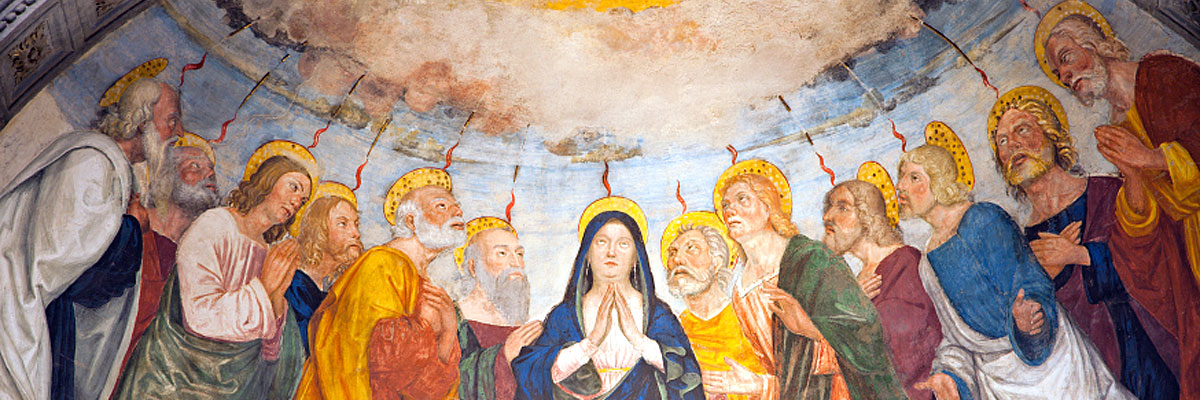
Understanding Our Church
A Treasury of Arkansas Writers Discussing the Catholic Faith
Official Website of the
Catholic Diocese of Little Rock
Anatomy of a blessing: Church’s how, who and what to bless
Published: October 7, 2023
By Kelli Nugent
St. Edward Church, Texarkana
A treasured memory I hold is receiving a blessing from both of my parents each night before bed. At least, most of the time it was treasured, except when I was at odds with them.
Through one’s baptismal priesthood, each of us is called to be a “blessing” and to bless (Catechism of the Catholic Church, no. 1669), hence the absolute appropriateness of a parent blessing a child.
Certain blessings have a lasting importance because they consecrate persons to God, or reserve objects and places for liturgical use. These blessings are sometimes referred to as constitutive blessings because they constitute a definitive change in the person, place or object, removing it from the secular world and setting it apart for a holy purpose.
Blessings fall under the category of sacramentals in the Church and among sacramentals, they are first. “Every blessing praises God and prays for his gifts” (catechism, no. 1671). "The more a blessing concerns ecclesial and sacramental life, the more is its administration reserved to the ordained ministry (bishops, priests or deacons)" (catechism, no. 1669).
Certain blessings have a lasting importance because they consecrate persons to God, or reserve objects and places for liturgical use (catechism, no. 1672). These blessings are sometimes referred to as constitutive blessings because they constitute a definitive change in the person, place or object, removing it from the secular world and setting it apart for a holy purpose. It is also known as consecration.
The ordinary minister of a consecration blessing is usually the bishop or an appointed individual, such as a priest who exercises his ministry under the bishop’s authority. The most obvious example of this is the blessing of the elements of bread and wine at the epiclesis at Mass, when the bishop or priest sets them aside for a sacred purpose and also consecrates them to become the body and blood of our Lord and Savior. In this instance, it is a blessing taking place as part of a sacrament.
The abbot or abbess of a monastery are consecrated (not to be confused with sacramental ordination). There are consecrated virgins and sometimes widows. Individuals making their final religious profession of vows receive a consecration blessing; they are choosing and the community is choosing them to be set apart from the world for the work of the Lord within that community.
To have the fullness of holy orders conferred upon a priest, typically three bishops consecrate this chosen man to his new state of bishop, Christ’s vicar to a particular Church.
Possibly more familiar than other objects used in the celebration of Mass is the consecration of paten and chalice. Once these are consecrated (before ever being used in a Mass), they are not ever to be used in a secular setting. Consider the fate of Belshazzar, son of Nebuchadnezzar, who ordered that the sacred vessels plundered by his father from the temple, be brought to the feast for his lords, wives and concubines to drink from them. It did not end well for him (see Daniel 5).
Every church at a minimum must be blessed or dedicated before the Mass can take place within them. Some churches are consecrated. Permanent fixed altars often receive a consecration blessing while being anointed with sacred chrism.
Perhaps the consecration that has surprised me the most was learning that at the Chrism Mass held each Holy Week, the bishop blesses two of the oils used during the coming year: the oil of catechumens and the oil of the sick. However the third oil, sacred chrism, is consecrated.
Some of our Eastern brethren in the Syriac Rite expresses the epiclesis for the consecration of the sacred chrism (myron) in this way: "(Father ... send your Holy Spirit) on us and on this oil which is before us and consecrate it, so that it may be for all who are anointed and marked with it holy myron, priestly myron, royal myron, anointing with gladness, clothing with light, a cloak of salvation, a spiritual gift, the sanctification of souls and bodies, imperishable happiness, the indelible seal, a buckler of faith, and a fearsome helmet against all the works of the adversary" (catechism, no. 1297).
A beautiful prayer for us to reflect on and pray that the effects of this consecration of sacred chrism be translated to us when receiving the sacrament of confirmation and for those chosen few men, the sacrament of holy orders.



